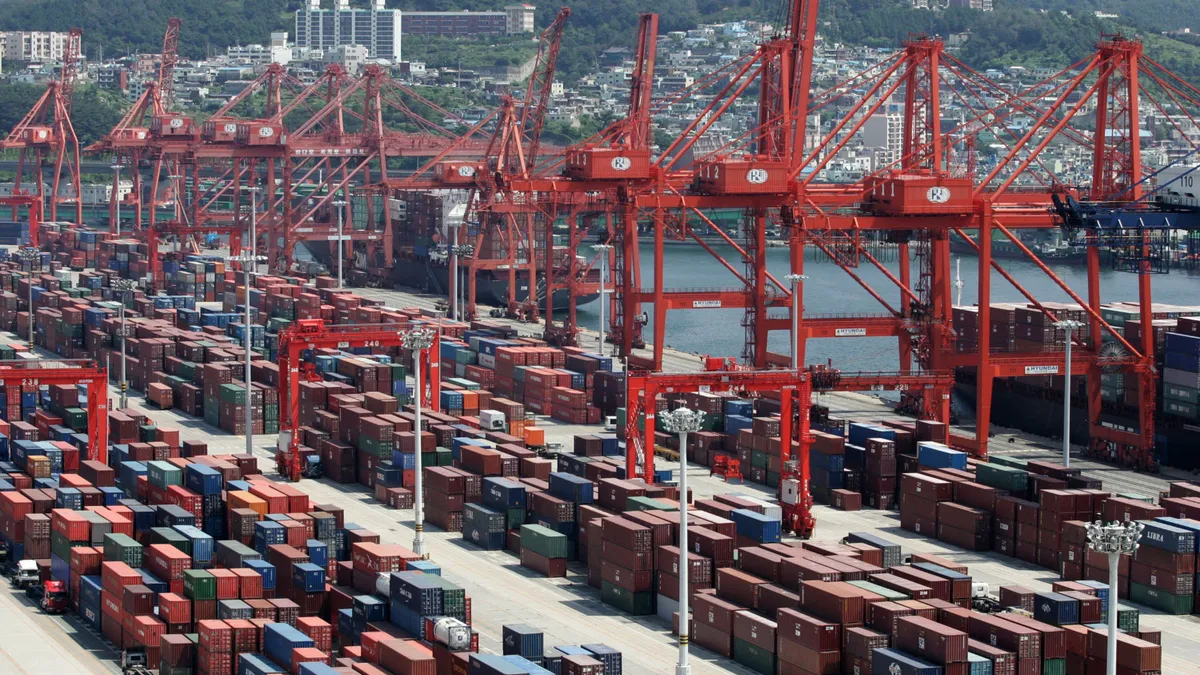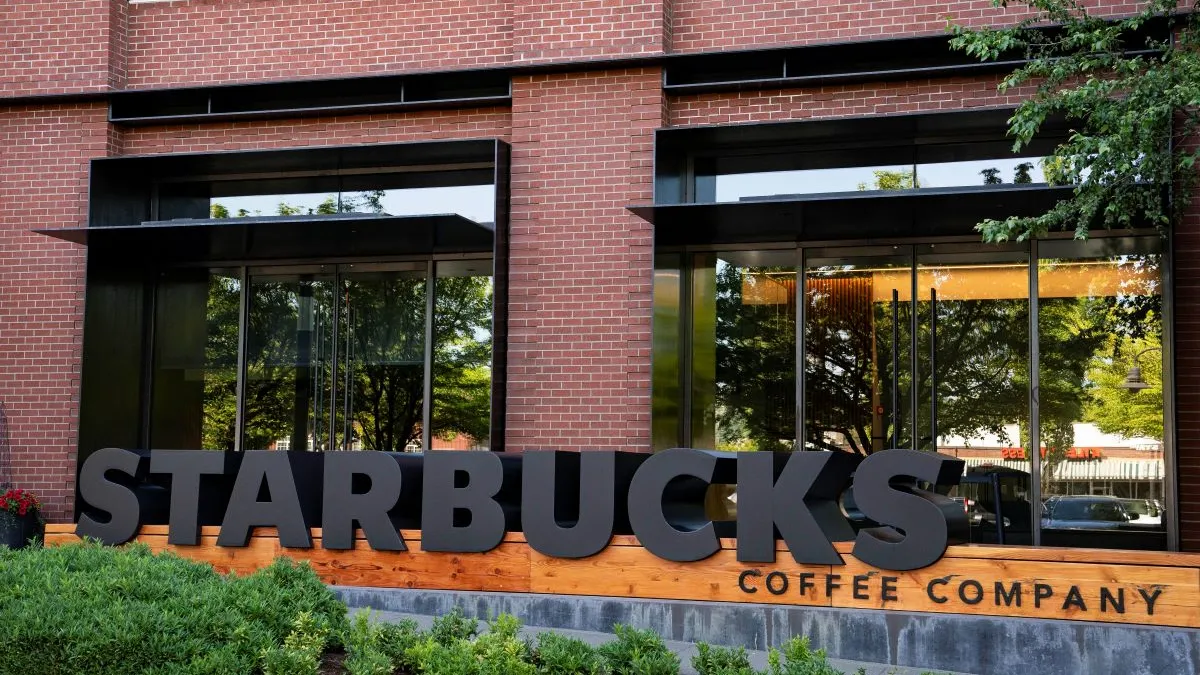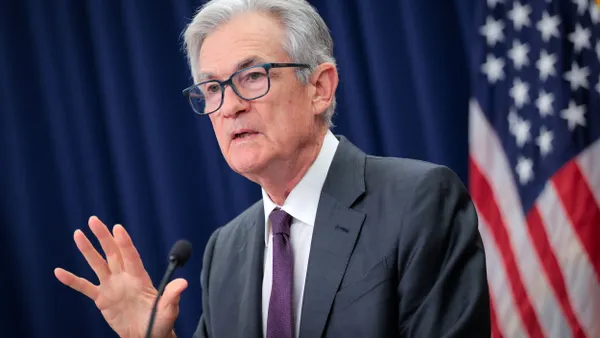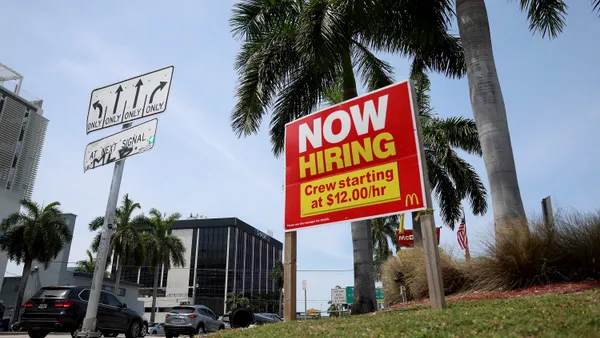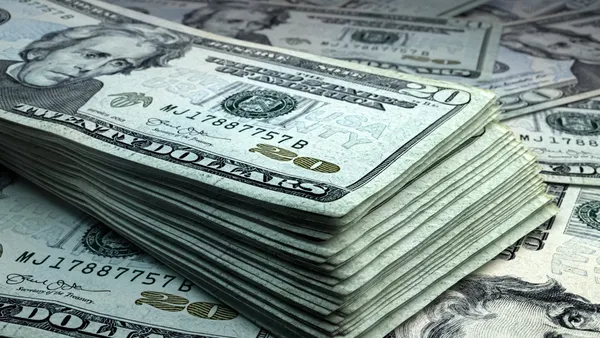Dive Brief:
- Tariffs imposed this year by the Trump administration have pushed up retail prices by 4.9 percentage points, the Tax Foundation said in a report.
- The highest U.S. tariffs since the 1930s have led to a 6 percentage point increase in the cost of imported goods and a 4.3 percentage point gain for domestic goods, the Tax Foundation said, citing research released this month by a team of Harvard University economists.
- “President Donald Trump and those in his administration have insisted that consumers are not bearing any of the tariffs,” Tax Foundation Senior Economist Alex Durante said in the report. “But the latest data show exactly the opposite.”
Dive Insight:
The Trump administration for months has asserted that import duties will at most cause a one-time bump in inflation.
White House Press Secretary Karoline Leavitt in a March 11 news conference, when asked about the administration’s import taxes targeting most U.S. trading partners, said “tariffs are a tax cut for the American people.”
Last month Federal Reserve Governor Stephen Miran, who has taken a leave of absence as the top White House economic adviser, said import duties have not shown signs of increasing price pressures.
Many economists overestimate the risk that tariffs will increase inflation, Miran said in a speech to the Economic Club of New York.
“Relatively small changes in some goods prices have led to what I view as unreasonable levels of concern,” he said.
Fed policymakers trimmed borrowing costs last month to bolster the job market while highlighting the need to monitor whether import duties will fuel more than a temporary gain in price pressures.
Trump’s tariffs, while not spurring a jump in prices as widely anticipated, will likely fuel a significant rise in inflation that lasts into next year, economists at the Atlanta Fed recently said this month, citing business surveys.
Cost and price expectations, as gauged in recent business surveys, “suggest a delayed — but nevertheless meaningful — impact from tariffs,” they said.
“Firms' unit cost and price growth expectations have risen markedly since this time last year, with prices expected to remain elevated into 2026,” the economists said. “Even non-importing firms that are not directly exposed to increased tariff rates expect an acceleration in price growth, suggesting some broadening of price pressures,” they said.
Consumers face an effective tariff rate of 18%, which will push up prices by 1.3% in the short run and undercut average household incomes by $1,800, the Yale Budget Lab estimated this month.
Over the long run, apparel, metal and leather prices will remain from 10% to 14% higher than without the import taxes, the Yale Budget Lab said.
U.S. importers and the businesses that buy from them often absorb some of the cost of tariffs in the form of lower profits before directly passing on higher prices to consumers, the Tax Foundation said.
Consumers also indirectly confront tariff-induced price increases, according to the Tax Foundation.
Domestic producers not subject to tariffs tend to raise prices to just below the new import price, outcompeting rival companies that import goods and generating higher profits at the expense of consumers, the Tax Foundation said.
“Consider the current tariffs on steel and aluminum, which are set at 50%,” the Tax Foundation said. “Due to the protectionist tariffs, domestic steel and aluminum smelters will also be incentivized to raise their prices, while keeping prices just below the import price to remain competitive.”
The Supreme Court will hear oral arguments early next month to determine whether Trump, when imposing tariffs this year, legitimately cited emergency powers granted under the International Emergency Economic Powers Act.
A ruling that Trump overstepped his authority would nullify most of his import taxes.




